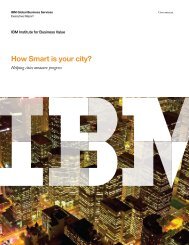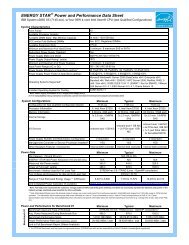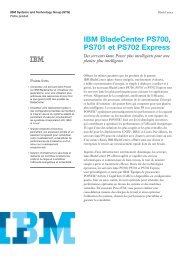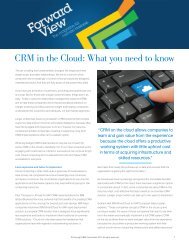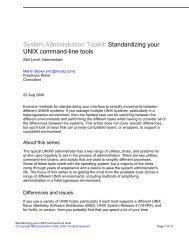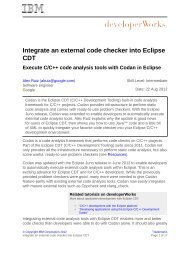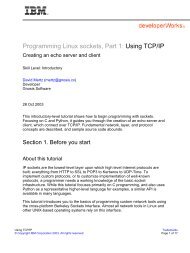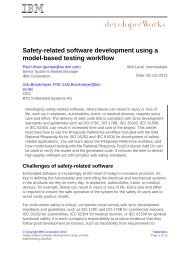TEC Workbook - IBM
TEC Workbook - IBM
TEC Workbook - IBM
You also want an ePaper? Increase the reach of your titles
YUMPU automatically turns print PDFs into web optimized ePapers that Google loves.
<strong>IBM</strong> Software<br />
__3. Click the green submit button to POST the XML to ProductServiceProxy. The request should fail<br />
again. To see details about the failure, click on the View Log link in the Multi-Protocol Gateway<br />
configuration page.<br />
2.5 Content-based Filtering<br />
You can easily extend the built-in threat protection by defining custom filters. A custom filter is an XSL<br />
template that makes an “accept” or “reject” decision based on some custom logic that you define.<br />
The “accept” and “reject” decision are accomplished using special built-in extension functions for XSL.<br />
The and extension functions are used to tell processing rule how to proceed<br />
with the message. The following XSL template inspects the element to make sure that it<br />
contains the word “DataPower”.<br />
Listing of file: customFilter.xsl<br />
<br />
<br />
<br />
<br />
<br />
<br />
Missing 'DataPower' trademark<br />
<br />
<br />
<br />
Now you’ll add a filter action to your processing rule.<br />
__1. In the policy editor window, drag a filter action onto the rule as shown below.<br />
__2. Double click the yellow outlined filter action to complete its configuration.<br />
__3. In the Transform section:<br />
__a. In the upper dropdown, make sure local:/// is selected.<br />
__b. In the lower dropdown, select customFilter.xsl.<br />
__4. In the Configure Filter Action window, click Done.<br />
Lab 2 - Working with XML Page 43



